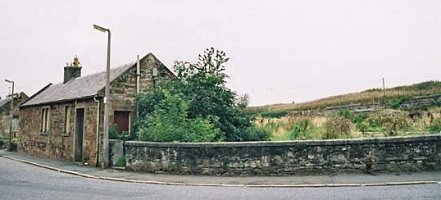 |
Shown at left are the remains of the Maybole Combination Poorhouse on Ladyland Road. The main buildings on this site are now demolished. The poorhouse served the parishes of Maybole, Barr, Dailley, Girvan, Kirkmichael, and Kirkoswald. Photo contributed by Martin Bone. |
|
|
|
|
Poor relief in Scotland in the years previous to 1845 had grown to meet the simple needs of a community organised on primitive lines. In truth the Poor Law was no more than a system of licensed begging and church alms. It was said to be insufficient and uncertain, lacking provision for the sick poor which was left mostly to private charity. The dreadful poverty present in towns led to public outcry desperate for Poor Law reform. In 1845 the Poor Law (Scotland) Amendment Act was passed. The parish remained the unit of administration of poor funds but Parochial Boards managed the parochial relief with a central Board of Supervision. The Parochial Boards decided whether an assessment or tax was required from citizens to provide adequate funds for the poor. Poor relief raised by assessment was only given to the elderly and infirm poor. The Parochial Board appointed an Inspector of the Poor to assess whether relief should or should not be provided.
Relief was limited to the aged and infirm poor. Parochial boards were permitted to subscribe to any public infirmary, lying-in-hospital, asylum or dispensary and were required “to provide for medicines, medical attendance, nutritious diet, cordials, and clothing for such Poor, in such manner and to such extent as may seem equitable and expedient; and it shall be lawful for the parochial board to make provision for the education of poor children who are themselves or whose parents are objects of parochial relief”.
After 1845, parishes in Scotland could choose to set up workhouses or, as happened in a large proportion of cases, just to give out-relief. Parishes or Combinations (Unions) established workhouses — more usually called poorhouses or poor's houses. (see www.workhouses.org.uk ) Constructed in 1863 the Maybole poorhouse, was a "substantial and competent building in the local pink stone". It could house 48 inmates. The facility was closed after the First World War. Part of the buildings were converted into use as District Offices and Labour Exchange, and part into offices as offices for a local company. More recently, the buildings were used for a youth organisation called the Maybole Dead End Club. John Anderson of Maybole was an Inspector of the Poor. See also a list of poor chargeable to the Parish of Maybole at 15th June, 1905 and lists from other dates. |
|